All About Petroleum Engineers
Petroleum Engineer Definition Devise methods to improve oil and gas extraction and production and determine the need for new or modified tool designs. Oversee drilling and offer technical advice.
Petroleum Engineer Responsibilities
- Simulate reservoir performance for different recovery techniques, using computer models.
- Supervise the removal of drilling equipment, the removal of any waste, and the safe return of land to structural stability when wells or pockets are exhausted.
- Direct and monitor the completion and evaluation of wells, well testing, or well surveys.
- Assist engineering and other personnel to solve operating problems.
- Monitor production rates, and plan rework processes to improve production.
- Take samples to assess the amount and quality of oil, the depth at which resources lie, and the equipment needed to properly extract them.
Skills Needed to be a Petroleum Engineer
Petroleum Engineers state the following job skills are important in their day-to-day work.
Reading Comprehension: Understanding written sentences and paragraphs in work related documents.
Active Listening: Giving full attention to what other people are saying, taking time to understand the points being made, asking questions as appropriate, and not interrupting at inappropriate times.
Speaking: Talking to others to convey information effectively.
Complex Problem Solving: Identifying complex problems and reviewing related information to develop and evaluate options and implement solutions.
Writing: Communicating effectively in writing as appropriate for the needs of the audience.
Critical Thinking: Using logic and reasoning to identify the strengths and weaknesses of alternative solutions, conclusions or approaches to problems.
Types of Petroleum Engineer
- Reservoir Engineering Manager
- Completions Engineer
- Mining and Oil Field Equipment Test Engineer
- Well Logging Captain
- Reservoir Engineering Consultant
Job Outlook for Petroleum Engineers
In the United States, there were 33,700 jobs for Petroleum Engineer in 2016. New jobs are being produced at a rate of 15.1% which is above the national average. The Bureau of Labor Statistics predicts 5,100 new jobs for Petroleum Engineer by 2026. There will be an estimated 2,800 positions for Petroleum Engineer per year.
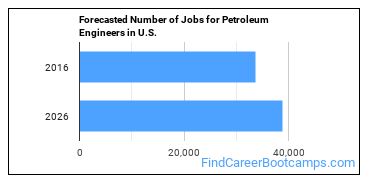
The states with the most job growth for Petroleum Engineer are Wyoming, North Dakota, and Colorado. Watch out if you plan on working in California, Alaska, or West Virginia. These states have the worst job growth for this type of profession.
Salary for a Petroleum Engineer
The typical yearly salary for Petroleum Engineers is somewhere between $74,270 and $208,000.
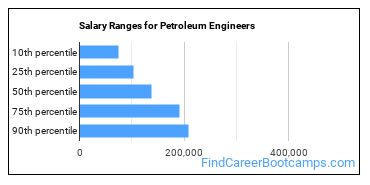
Petroleum Engineers who work in Indiana, New Jersey, or Texas, make the highest salaries.
Below is a list of the median annual salaries for Petroleum Engineers in different U.S. states.
| State | Annual Mean Salary |
|---|---|
| Alabama | $115,180 |
| Alaska | $161,290 |
| Arizona | $137,830 |
| California | $142,430 |
| Colorado | $153,640 |
| Hawaii | $121,050 |
| Illinois | $131,510 |
| Indiana | $198,590 |
| Kansas | $118,160 |
| Louisiana | $145,880 |
| Montana | $141,530 |
| New Jersey | $194,340 |
| North Dakota | $124,880 |
| Ohio | $94,270 |
| Oklahoma | $146,990 |
| Pennsylvania | $122,510 |
| Texas | $169,010 |
| West Virginia | $111,400 |
| Wyoming | $115,250 |
What Tools do Petroleum Engineers Use?
Below is a list of the types of tools and technologies that Petroleum Engineers may use on a daily basis:
- Microsoft Excel
- Microsoft Word
- Microsoft Office
- Microsoft PowerPoint
- Microsoft Outlook
- Web browser software
- Python
- Microsoft Access
- SAP
- Microsoft Project
- Autodesk AutoCAD
- Microsoft Visio
- The MathWorks MATLAB
- SAS
- Linux
- IBM Notes
- R
- Oracle software
- Enterprise resource planning ERP software
- Google Analytics
How to Become a Petroleum Engineer
Individuals working as a Petroleum Engineer have obtained the following education levels:

What work experience do I need to become a Petroleum Engineer?
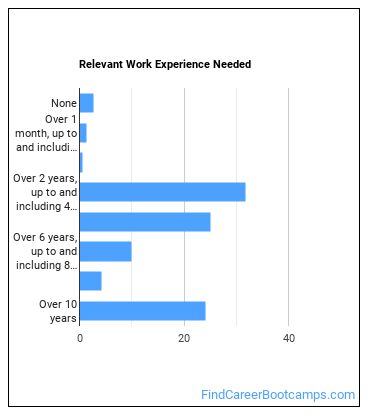
Where Petroleum Engineers Are Employed
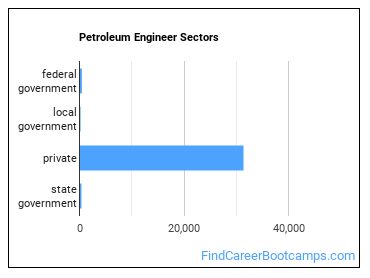
Petroleum Engineers work in the following industries:
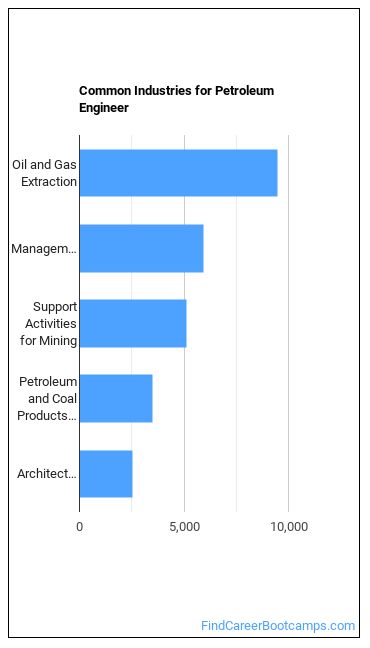
References:
Image Credit: {} via CC0 Public Domain
More about our data sources and methodologies.
